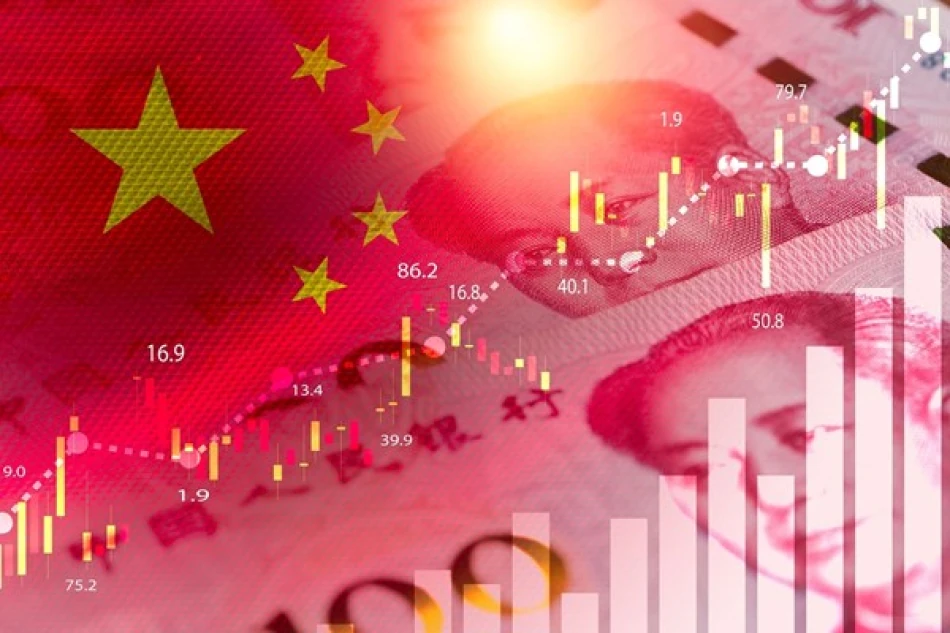
China's Fiscal Spending Rises 3.4% in First Half, Driving Economic Recovery
China Ramps Up Spending Despite Revenue Decline as Economic Pressures Mount
China increased its fiscal spending by 3.4% year-on-year to nearly 14.13 trillion yuan ($1.98 trillion) in the first half of 2025, even as government revenues contracted by 0.3%. The spending surge, particularly in social security, employment, and technology sectors, signals Beijing's commitment to stimulating economic growth amid persistent domestic challenges and global uncertainties.
Strategic Spending Priorities Reveal Policy Focus
The Chinese Ministry of Finance data reveals a clear hierarchy in spending priorities that reflects the government's immediate concerns. Social security and employment saw the largest boost at 9.2% year-on-year growth, followed closely by science and technology at 9.1%. Education and healthcare received more modest increases of 5.9% and 4.3% respectively.
This spending pattern mirrors China's dual challenge of maintaining social stability while competing technologically with the United States. The emphasis on employment support suggests ongoing concerns about job creation in a slowing economy, while the technology investment underscores Beijing's determination to achieve self-reliance in critical sectors.
Revenue-Spending Gap Widens Fiscal Deficit
The divergence between spending growth and revenue decline creates a significant fiscal gap that Beijing appears willing to accept. With spending rising 3.4% while revenues fell 0.3%, China is effectively running a more expansionary fiscal policy than the raw numbers suggest.
Central vs. Local Government Dynamics
The revenue breakdown reveals interesting dynamics between different levels of government. Central government revenues dropped 2.8% to 4.86 trillion yuan, while local governments managed to increase collections by 1.6% to 6.7 trillion yuan. This suggests that local economic activity may be more resilient than national-level indicators imply, or that local governments are more aggressive in revenue collection.
Market and Investment Implications
For investors, this fiscal stance represents both opportunity and risk. The increased spending on technology and infrastructure creates potential winners in those sectors, while the focus on employment suggests continued support for manufacturing and services. However, the growing fiscal deficit raises questions about debt sustainability, particularly given China's already elevated local government debt levels.
Currency markets may interpret this data as mildly negative for the yuan, as fiscal expansion without corresponding revenue growth typically pressures exchange rates. Bond markets, conversely, might see increased issuance to fund the spending gap.
Global Context and Comparisons
China's fiscal approach contrasts sharply with many developed economies that are tightening spending amid inflation concerns. While the United States and European Union grapple with reducing pandemic-era fiscal support, China continues expanding government involvement in the economy.
This divergence reflects different economic cycles and priorities. China's focus on technology spending particularly stands out when compared to other major economies, suggesting Beijing views the current period as crucial for establishing technological leadership rather than fiscal consolidation.
Outlook and Strategic Implications
The spending pattern indicates China is prioritizing long-term competitiveness over short-term fiscal balance. The heavy investment in science and technology, combined with social stability measures, suggests preparation for an extended period of economic and geopolitical competition.
However, this strategy carries risks. If revenue growth doesn't recover in the second half of 2025, China may face difficult choices between maintaining spending levels and fiscal sustainability. The success of this approach will largely depend on whether increased technology investment translates into productivity gains and whether employment support measures generate sustainable job creation.
Most Viewed News

 Layla Al Mansoori
Layla Al Mansoori






